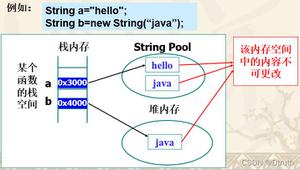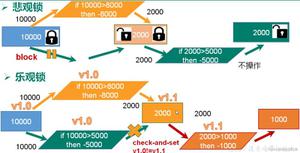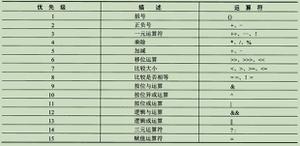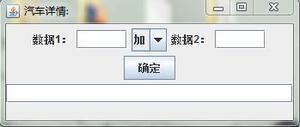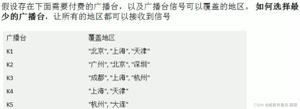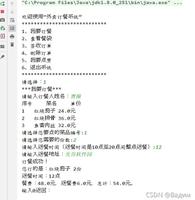java限流算法详细
1、场景
程序中经常需要对接口进行限流,防止访问量太大,导致程序崩溃。
常用的算法有:计数算法、
漏桶算法、令牌桶算法,最常用的算法是后面两种。
2、算法详解
2.1 计数算法
2.1.1 说明
技术算法,为最简单的限流算法。
核心思想是,每隔一段时间,为计数器设定最大值,请求一次,计数器数量减一,如果计数器为0,则拒绝请求。
计数器算法图示:
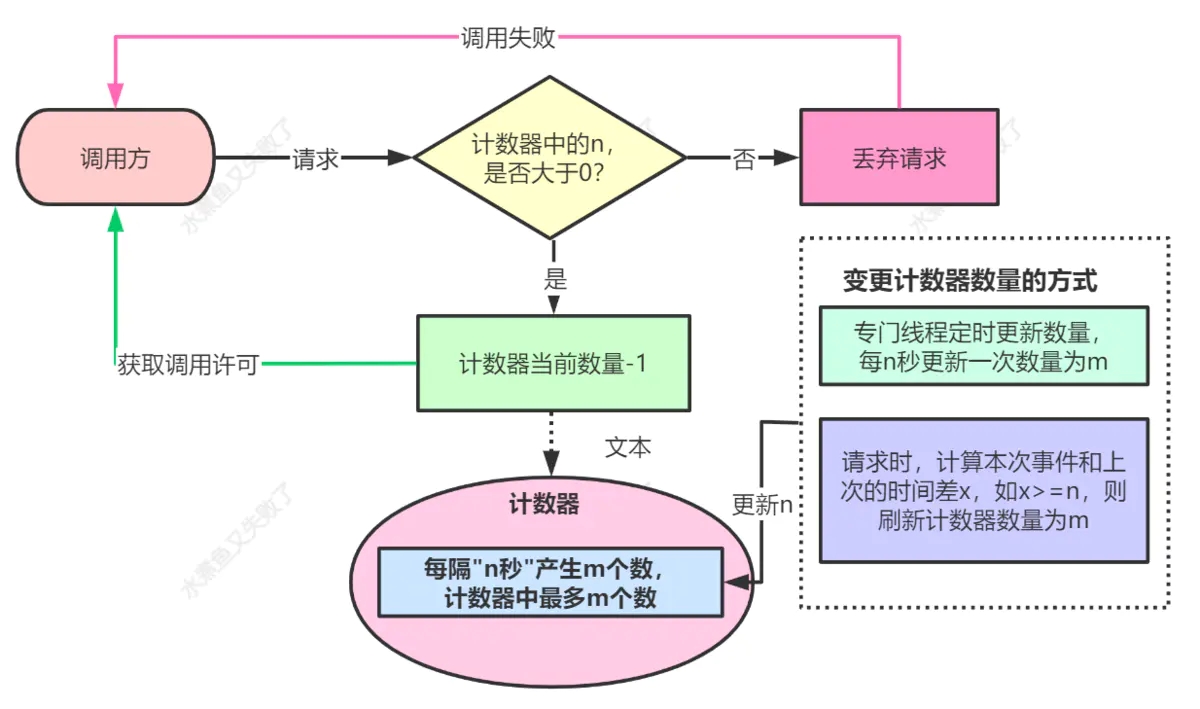
2.1.2 适用场景
虽然此算法是大多数人第一个想到可以限流的算法,但是不推荐使用此算法。
因为,此算法有个致命性的问题,如果1秒允许的访问次数为100,前0.99秒内没有任何请求,在最后0.01秒内,出现了200个请求,则这200个请求,都会获取调用许可,给程序带来一次请求的高峰。
如下图所示:计数器算法缺点
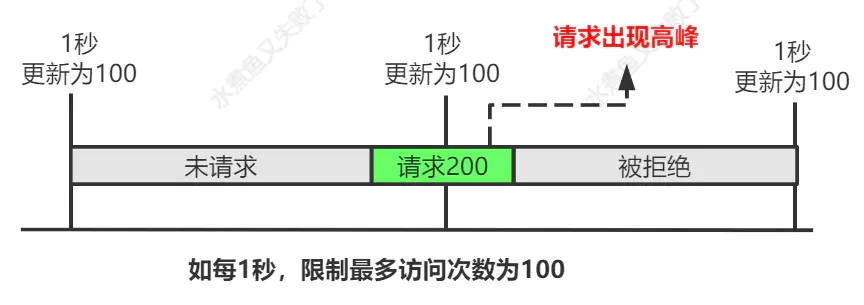
2.1.3 代码
import java.time.LocalDateTime;
import java.util.concurrent.TimeUnit;
/**
* 计数器限流器
*/
public class CountLimiter {
/**
* 执行区间(毫秒)
*/
private int secondMill;
/**
* 区间内计数多少次
*/
private int maxCount;
/**
* 当前计数
*/
private int currentCount;
/**
* 上次更新时间(毫秒)
*/
private long lastUpdateTime;
public CountLimiter(int second, int count) {
if (second <= 0 || count <= 0) {
throw new IllegalArgumentException("second and time must by positive");
}
this.secondMill = second * 1000;
this.maxCount = count;
this.currentCount = this.maxCount;
this.lastUpdateTime = System.currentTimeMillis();
}
/**
* 刷新计数器
*/
private void refreshCount() {
long now = System.currentTimeMillis();
if ((now - this.lastUpdateTime) >= secondMill) {
this.currentCount = maxCount;
this.lastUpdateTime = now;
}
}
/**
* 获取授权
* @return
*/
public synchronized boolean tryAcquire() {
// 刷新计数器
this.refreshCount();
if ((this.currentCount - 1) >= 0) {
this.currentCount--;
return true;
} else {
return false;
}
}
}
测试方法:
public static void main(String[] args) throws Exception {
// 1秒限制执行2次
CountLimiter countLimiter = new CountLimiter(1, 2);
for (int i = 0; i < 10; i++) {
System.out.println(LocalDateTime.now() + " " + countLimiter.tryAcquire());
TimeUnit.MILLISECONDS.sleep(200);
}
}
执行结果:
2021-05-31T22:01:08.660 true
2021-05-31T22:01:08.868 true
2021-05-31T22:01:09.074 false
2021-05-31T22:01:09.275 false
2021-05-31T22:01:09.485 false
2021-05-31T22:01:09.698 true
2021-05-31T22:01:09.901 true
2021-05-31T22:01:10.104 false
2021-05-31T22:01:10.316 false
2021-05-31T22:01:10.520 false
2.2 漏桶算法
2.2.1 说明
漏桶算法称为leaky bucket,可限制指定时间内的最大流量,如限制60秒内,最多允许100个请求。
其中接受请求的速度是不恒定的(水滴入桶),处理请求的速度是恒定的(水滴出桶)。
算法总体描述如下:
- 有个固定容量的桶B(指定时间区间X,允许的的最大流量B),如60秒内最多允许100个请求,则B为100,X为60。
- 有水滴流进来(有请求进来),桶里的水+1。
- 有水滴流出去(执行请求对应的业务),桶里的水-1
(业务方法,真正开始执行=>这是保证漏桶匀速处理业务的根本),水滴流出去的速度是匀速的,流速为B/X(1毫秒100/60次,约1毫秒0.00167次,精度可根据实际情况自己控制) - 水桶满了后(60秒内请求达到了100次),水滴无法进入水桶,请求被拒绝
2.2.2 漏桶算法图示
实际开发中,漏桶的使用方式可参考下图:
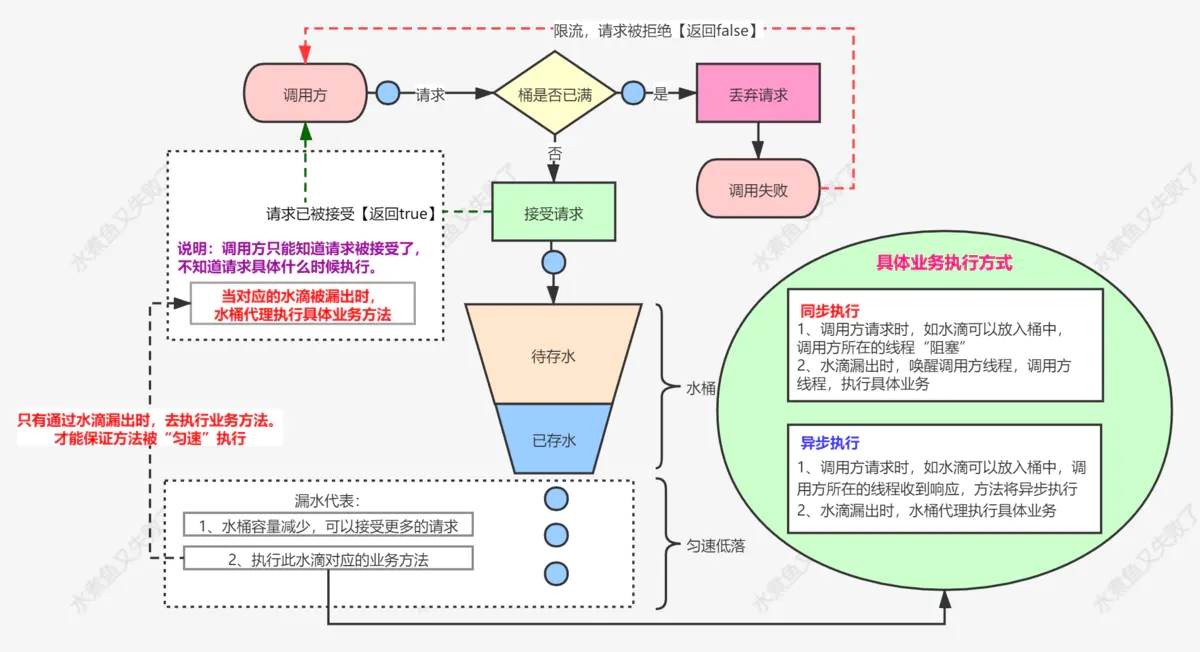
注意:水滴滴落的时候,才开始执行业务代码,而不是水滴进桶的时候,去执行业务代码。
业务代码的执行方式,个人认为有如下两种:
同步执行:
- 调用方请求时,如水滴可以放入桶中,调用方所在的线程“阻塞”
- 水滴漏出时,唤醒调用方线程,调用方线程,执行具体业务
异步执行:
- 调用方请求时,如水滴可以放入桶中,调用方所在的线程收到响应,方法将异步执行
- 水滴漏出时,水桶代理执行具体业务
网上很多滴桶的实现代码,在水滴进桶的时候,就去执行业务代码了。这样会导致业务代码,
无法匀速地执行,仍然对被调用的接口有一瞬间流量的冲击(和令牌桶算法的最终实现效果一样)。
2.2.3 适用场景
水桶的进水速度是不可控的,有可能一瞬间有大量的请求进入水桶。处理请求的速度是恒定的(滴水的时候处理请求)。
此算法,主要应用于自己的服务,调用外部接口。以均匀的速度调用外部接口,防止对外部接口的压力过大,而影响外部系统的稳定性。如果影响了别人的系统,接口所在公司会来找你喝茶。
漏桶算法,主要用来保护别人的接口。
2.2.4 代码
本实例代码的实现,在水滴滴下,执行具体业务代码时,采用同步执行的方式。即唤醒调用方的线程,让"调用者"所属的线程去执行具体业务代码,去调用接口。
import java.net.SocketTimeoutException;
import java.time.LocalDateTime;
import java.util.Queue;
import java.util.UUID;
import java.util.concurrent.ArrayBlockingQueue;
import java.util.concurrent.BlockingQueue;
import java.util.concurrent.LinkedBlockingQueue;
import java.util.concurrent.TimeUnit;
import java.util.concurrent.locks.LockSupport;
/**
* 漏桶算法
*/
public class LeakyBucketLimiterUtil {
/**
* 漏桶流出速率(多少纳秒执行一次)
*/
private long outflowRateNanos;
/**
* 漏桶容器
*/
private volatile BlockingQueue<Drip> queue;
/**
* 滴水线程
*/
private Thread outflowThread;
/**
* 水滴
*/
private static class Drip {
/**
* 业务主键
*/
private String busId;
/**
* 水滴对应的调用者线程
*/
private Thread thread;
public Drip(String busId, Thread thread) {
this.thread = thread;
}
public String getBusId() {
return this.busId;
}
public Thread getThread() {
return this.thread;
}
}
/**
* @param second 秒
* @param time 调用次数
*/
public LeakyBucketLimiterUtil(int second, int time) {
if (second <= 0 || time <= 0) {
throw new IllegalArgumentException("second and time must by positive");
}
outflowRateNanos = TimeUnit.SECONDS.toNanos(second) / time;
queue = new LinkedBlockingQueue<>(time);
outflowThread = new Thread(() -> {
while (true) {
Drip drip = null;
try {
// 阻塞,直到从桶里拿到水滴
drip = queue.take();
} catch (Exception e) {
e.printStackTrace();
}
if (drip != null && drip.getThread() != null) {
// 唤醒阻塞的水滴里面的线程
LockSupport.unpark(drip.getThread());
}
// 休息一段时间,开始下一次滴水
LockSupport.parkNanos(this, outflowRateNanos);
}
}, "漏水线程");
outflowThread.start();
}
/**
* 业务请求
*
* @return
*/
public boolean acquire(String busId) {
Thread thread = Thread.currentThread();
Drip drip = new Drip(busId, thread);
if (this.queue.offer(drip)) {
LockSupport.park();
return true;
} else {
return false;
}
}
}
测试代码如下:
public static void main(String[] args) throws Exception {
// 1秒限制执行1次
LeakyBucketLimiterUtil leakyBucketLimiter = new LeakyBucketLimiterUtil(5, 2);
for (int i = 0; i < 10; i++) {
new Thread(new Runnable() {
@Override
public void run() {
String busId = "[业务ID:" + LocalDateTime.now().toString() + "]";
if (leakyBucketLimiter.acquire(busId)) {
System.out.println(LocalDateTime.now() + " " + Thread.currentThread().getName() + ":调用外部接口...成功:" + busId);
} else {
System.out.println(LocalDateTime.now() + " " + Thread.currentThread().getName() + ":调用外部接口...失败:" + busId);
}
}
}, "测试线程-" + i).start();
TimeUnit.MILLISECONDS.sleep(500);
}
}
执行结果如下:
2021-05-31T20:52:52.297 测试线程-0:调用外部接口...成功:[业务ID:2021-05-31T20:52:52.295]
2021-05-31T20:52:53.782 测试线程-3:调用外部接口...失败:[业务ID:2021-05-31T20:52:53.782]
2021-05-31T20:52:54.286 测试线程-4:调用外部接口...失败:[业务ID:2021-05-31T20:52:54.286]
2021-05-31T20:52:54.799 测试线程-1:调用外部接口...成功:[业务ID:2021-05-31T20:52:52.761]
2021-05-31T20:52:55.300 测试线程-6:调用外部接口...失败:[业务ID:2021-05-31T20:52:55.300]
2021-05-31T20:52:55.806 测试线程-7:调用外部接口...失败:[业务ID:2021-05-31T20:52:55.806]
2021-05-31T20:52:56.307 测试线程-8:调用外部接口...失败:[业务ID:2021-05-31T20:52:56.307]
2021-05-31T20:52:56.822 测试线程-9:调用外部接口...失败:[业务ID:2021-05-31T20:52:56.822]
2021-05-31T20:52:57.304 测试线程-2:调用外部接口...成功:[业务ID:2021-05-31T20:52:53.271]
2021-05-31T20:52:59.817 测试线程-5:调用外部接口...成功:[业务ID:2021-05-31T20:52:54.799]
2.3 令牌桶算法
2.3.1 说明
令牌桶算法,主要是匀速地增加可用令牌,令牌数因为桶的限制有数量上限。
请求拿到令牌,相当于拿到授权,即可进行相应的业务操作。
2.3.2 令牌桶算法图示

2.3.3 适用场景
和漏桶算法比,有可能导致短时间内的请求数上升(因为拿到令牌后,就可以访问接口,有可能一瞬间将所有令牌拿走),但是不会有计数算法那样高的峰值(因为令牌数量是匀速增加的)。
一般自己调用自己的接口,接口会有一定的伸缩性,令牌桶算法,主要用来保护自己的服务器接口。
2.3.4 代码
代码实现如下:
import java.time.LocalDateTime;
import java.util.concurrent.TimeUnit;
/**
* 令牌桶限流算法
*/
public class TokenBucketLimiter {
/**
* 桶的大小
*/
private double bucketSize;
/**
* 桶里的令牌数
*/
private double tokenCount;
/**
* 令牌增加速度(每毫秒)
*/
private double tokenAddRateMillSecond;
/**
* 上次更新时间(毫秒)
*/
private long lastUpdateTime;
/**
* @param second 秒
* @param time 调用次数
*/
public TokenBucketLimiter(double second, double time) {
if (second <= 0 || time <= 0) {
throw new IllegalArgumentException("second and time must by positive");
}
// 桶的大小
this.bucketSize = time;
// 桶里的令牌数
this.tokenCount = this.bucketSize;
// 令牌增加速度(每毫秒)
this.tokenAddRateMillSecond = time / second / 1000;
// 上次更新时间(毫秒)
this.lastUpdateTime = System.currentTimeMillis();
}
/**
* 刷新桶内令牌数(令牌数不得超过桶的大小)
* 计算“上次刷新时间”到“当前刷新时间”中间,增加的令牌数
*/
private void refreshTokenCount() {
long now = System.currentTimeMillis();
this.tokenCount = Math.min(this.bucketSize, this.tokenCount + ((now - this.lastUpdateTime) * this.tokenAddRateMillSecond));
this.lastUpdateTime = now;
}
/**
* 尝试拿到权限
*
* @return
*/
public synchronized boolean tryAcquire() {
// 刷新桶内令牌数
this.refreshTokenCount();
if ((this.tokenCount - 1) >= 0) {
// 如果桶中有令牌,令牌数-1
this.tokenCount--;
return true;
} else {
// 桶中已无令牌
return false;
}
}
}
测试代码:
public static void main(String[] args) throws Exception{
// 2秒执行1次
TokenBucketLimiter leakyBucketLimiter = new TokenBucketLimiter(2, 1);
for (int i = 0; i < 10; i++) {
System.out.println(LocalDateTime.now() + " " + leakyBucketLimiter.tryAcquire());
TimeUnit.SECONDS.sleep(1);
}
}
执行结果如下:
2021-05-31T21:38:34.560 true
2021-05-31T21:38:35.582 false
2021-05-31T21:38:36.588 true
2021-05-31T21:38:37.596 false
2021-05-31T21:38:38.608 true
2021-05-31T21:38:39.610 false
2021-05-31T21:38:40.615 true
2021-05-31T21:38:41.627 false
2021-05-31T21:38:42.641 true
2021-05-31T21:38:43.649 false
2.3.5 第三方工具类
可以使用Guava中的RateLimiter来实现令牌桶的限流功能。
maven依赖如下:
<dependency>
<groupId>com.google.guava</groupId>
<artifactId>guava</artifactId>
<version>30.1.1-jre</version>
</dependency>
直接获取令牌(true为获取到令牌,false为获取失败):
RateLimiter rateLimiter = RateLimiter.create(2);
boolean acquireResule = rateLimiter.tryAcquire();
if (acquireResule) {
System.out.println("获取令牌:成功");
} else {
System.out.println("获取令牌:失败");
}
等待尝试获取令牌(阻塞当前线程,直到获取到令牌):
RateLimiter rateLimiter = RateLimiter.create(2);
// 阻塞获取令牌
double waitCount = rateLimiter.acquire();
System.out.println("阻塞等待时间:" + waitCount);
以上就是java限流算法详细的详细内容,更多关于java限流算法的资料请关注其它相关文章!希望大家以后多多支持!
以上是 java限流算法详细 的全部内容, 来源链接: utcz.com/p/248465.html


